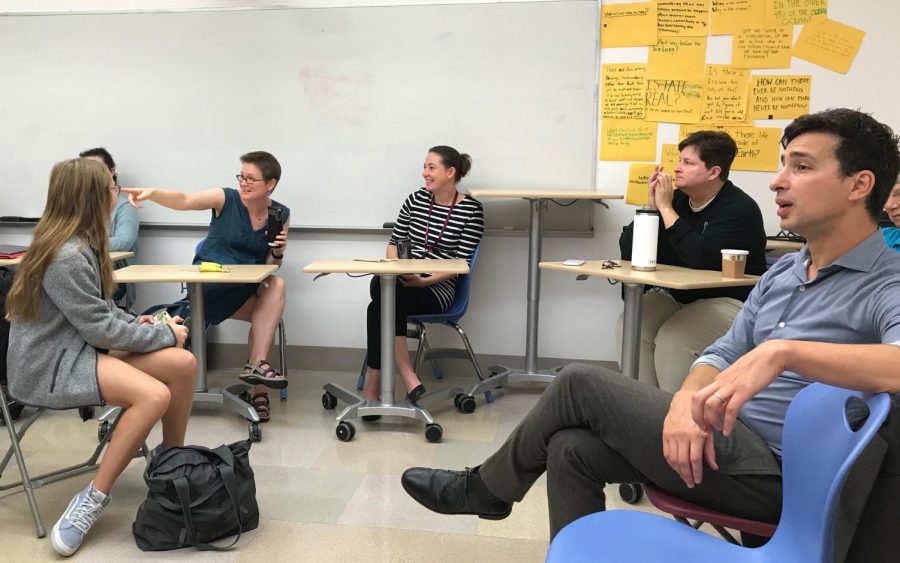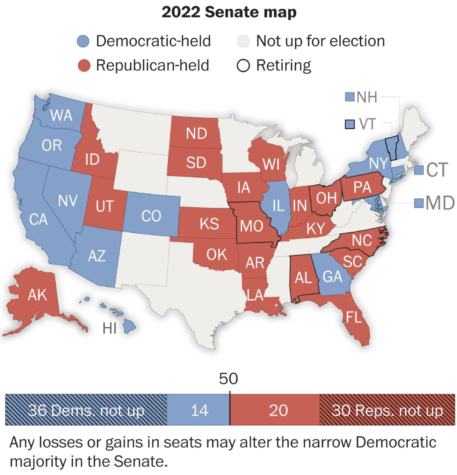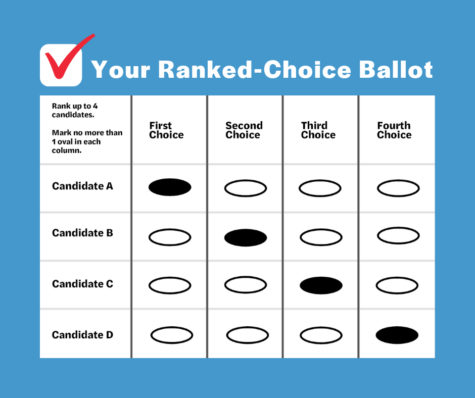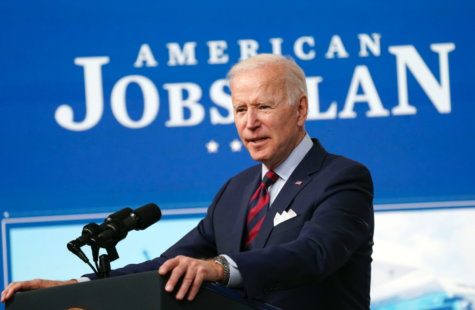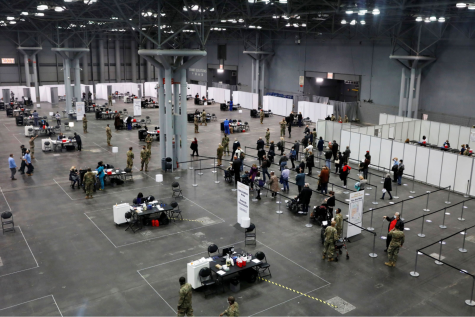The NYT’s Sam Dolnick on Journalism and the Kavanaugh Hearings
The World Affairs Breakfast Club Report
On October 3rd, the Breakfast Club was lucky enough to hear from Sam Dolnick, an Assistant Managing Editor at the New York Times and a Berkeley Carroll parent. Room 144 was packed with more people than the 2/3 train at rush hour, with middle and upper school students listening intently to Dolnick as he discussed his journalistic career and his personal take on the recent Kavanaugh hearings.
Dolnick started at a local newspaper, the Staten Island Advance, covering all things from a new stop sign to PTA meetings, where he learned the merits of accountability. In such a small, close-knit community, it was incredibly easy to bump into the person written about in your most recent article. The values of accountability and fact-checking have followed him all the way from the Staten Island Advance to the prestigious newsroom of the New York Times. Although he now works at the Times, Dolnick believes that we need a resurgence of local newspapers in order to really investigate the nitty-gritty of small neighborhoods. The Advance luckily still remains, even though many local newspapers are losing influence in their communities.
Following his stint at the Advance, Dolnick transferred to the Associated Press New York Bureau, where he worked with BC’s own history teacher and Director of Learning Strategies, Ms. Epstein. He described the Associated Press (AP) as the internet before the internet. The AP was constantly updating and was quick to cover breaking news. He also worked for the AP in New Delhi, where he covered stories from all over Southeastern Asia. His job was daunting, challenging, and demanding, but rewarding nonetheless. The overseas experience was completely novel; everything was a story, an article waiting to be written. A highlight of his time in India was his coverage of the coup in Kathmandu, Nepal. For Dolnick, Kathmandu was a real culture shock. While New Delhi was being industrialized and urbanized, the capital of Nepal remained incredibly poor. However, the city was bewilderingly beautiful, with a trove of journalistic mysteries.
After his time at the New Dehli AP, Dolnick returned to New York City to work for the New York Times (NYT). During his years employed at the Associated Press, he realized just how formidable an opponent the Times was. He stated that “[The New York Times] was sort of like the Yankees.” The Times had seemingly never-ending resources; they were always the first at the site of a breaking news story, with a large team of fully-equipped journalists. But during his first years at the newspaper, he wasn’t in the big Manhattan newsroom or investigating potentially career-making stories. Instead, he worked in the small Bronx newsroom.
Although the Bronx was part of the city, in many ways, it was like an entirely different country. Dolnick saw his first responsibility at the NYT as a foreign assignment. He got to know the neighborhoods, visit churches, and talk to rabbis, pastors, and imams. He went to barber shops and restaurants, learned about people’s lives, and really immersed himself in the diverse culture of the Bronx.
Dolnick’s next assignment at the NYT was what he referred to as the “Immigration Report,” where he investigated the relationships between New York and immigrant communities. He focused mainly on the Sri Lankan Buddhist and Hindu communities in Queens. He also shared some anecdotes about hilarious culture clashes. My personal favorite was the story of Sri Lankan immigrants placing coconuts and ashes in the Hudson River. Just as Mecca is a holy site for the Abrahamic religions, the Ganges is sacred for Hindus and Buddhists. So, in the absence of the Ganges, they decided to use the Hudson River for their spiritual rituals. Needless to say, the local forest rangers were very annoyed.
Prior to his promotion to Assistant Managing Editor, Dolnick also worked as an investigative reporter. Perhaps his greatest achievement during this time was his three-part investigation into corruption and cronyism in New Jersey halfway houses. He spent ten months combing through hundreds of documents, talking to people associated with these halfway houses, and looking for any evidence that would support his investigation. In the end, his investigation sparked outrage, and New Jersey state legislation was changed due to his efforts.
Dolnick was then promoted to an entirely new position: Mobile Editor. In an era where phones and other technology dominate our daily lives, mobile devices are often the best way to promulgate the news. But being Mobile Editor didn’t simply mean transcribing articles to fit on phone screens– it also meant changing the content of the NYT, a movement which he spearheaded. People wanted to see more visual stories, photos, and videos. The tone of the newspaper shifted from formal and reportorial to more conversational and breezy.
After discussing his career, Dolnick transitioned to talking about the current Brett Kavanaugh hearings. Kavanaugh, President Donald Trump’s Supreme Court nominee, was accused of assaulting three different women during his teenage years. The hearings and accusations have captivated the country. Women are protesting in Washington D.C. and fervently campaigning for a nominee without a history of sexual abuse. Some women are being arrested in the process. According to Dolnick, on September 27, the day that Kavanaugh’s first accuser, Dr. Christine Blasey Ford testified in front of the Senate Judiciary Committee, the entire newsroom sat in silence, watching the proceedings. The hearings, which have sparked an unbelievable amount of controversy, are representative of multiple themes from the past 10 years wrapped into one, major event. The potential outcome of the Kavanaugh confirmation process has the entire American populace on edge.
Alexa B. ‘24 commented that the Berkeley Carroll seventh-grade was afraid of what could happen if Kavanaugh was, in fact, confirmed to the Supreme Court. Her Humanities class live-streamed it from the NYT, and then had a conversation about sexual abuse and politics. She is very proud of Dr. Ford for coming forward and telling her story, despite backlash and criticism. Jake P. ‘20 asked Dolnick if Roe v. Wade was the most important decision that might be overturned if Kavanaugh became a justice. Dolnick responded succinctly, saying that there is no need to rank the influence of certain laws, as we’ve seen just how important and wide-reaching the Supreme Court can be.
Dolnick said that live-streaming was the easiest and most effective way to broadcast the hearings. It allowed for instant fact-checking and accountability journalism. The NYT also had a roundtable of women watching the hearings, and experts analyzing the highlights the following day. The #MeToo movement and the Anita Hill testimony were also used by reporters as lenses for their interpretations of the Kavanaugh hearings. As awareness of sexual abuse increases, the American public is beginning to question the legitimacy, integrity, and decency of federal institutions, like the Supreme Court. Dolnick believes that with the evolving political climate comes novel perspectives and a completely reinvented sense of journalism.

